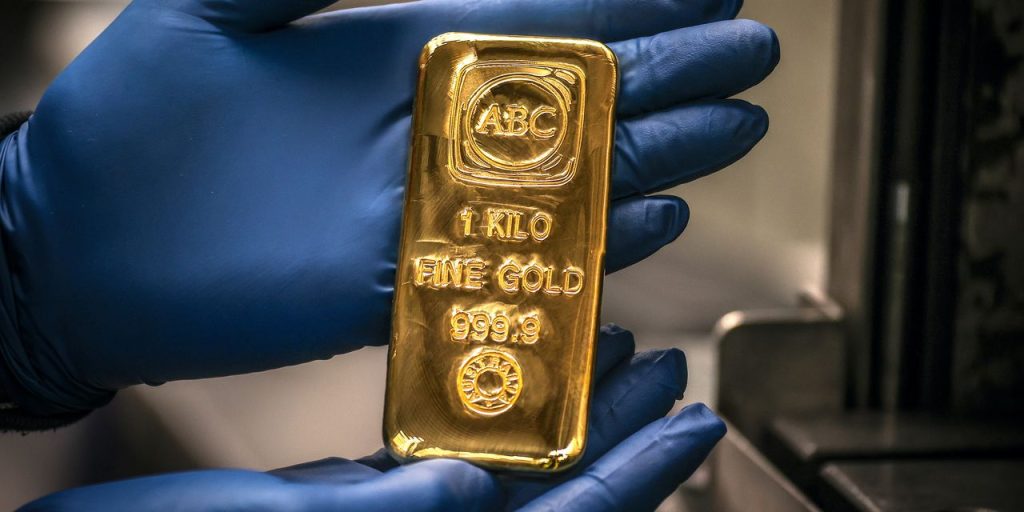Gold prices are trading this week just a stone’s throw away from their all-time settlement high, but the move above the key $2,000-an-ounce mark was a long time in the making.
What’s surprising is how long gold has spent “trying to establish itself above the $2,000 level,” George Milling-Stanley, chief gold strategist at State Street Global Advisors, told MarketWatch. Aside from last year, prices were above that on an intraday basis in 2020, and “the macroeconomic and geopolitical background has been very favorable for gold for over a year.”
With inflation at a 40-year high and “stubbornly resistant” to the Federal Reserve’s efforts to bring it down, the world likely on the cusp of a global recession, and a conflict in Europe with the potential to turn nuclear, it’s “high time gold responded appropriately,” said Milling-Stanley.
The most-active June gold futures contract
GC00,
+0.18%
GCM23,
+0.18%
settled Tuesday at $2,038.20 an ounce, the highest since March of 2022. Prices on Wednesday traded at $2,038.40 in Wednesday dealings, not far from the Aug. 6, 2020 record high settlement of $2,069.40 and all-time intraday high of $2,089.20 from Aug. 7, 2020, according to Dow Jones Market Data.
The rally in gold prices is “not surprising given the increase in geopolitical tension,” said Joy Yang, global head of index product management at MarketVector Indexes. “This was always going to be a contributor to gold price volatility in 2023.”
Overall, “markets are struggling with uncertainty, and inflation is back in pole position, but markets are split in Fed interest rate direction,” she told MarketWatch. “Gold is a good hedge for either outcome.”
While the bank sector crisis is in the rearview mirror, people are looking at credit risk, so “economic fragility” continues, Yang said, and gold is a safe haven.
Meanwhile, the oil supply shock and weak U.S. economic data so far this week are contributing to a weaker U.S. dollar, and gold does well when the dollar is down, said Yang. The ICE U.S. Dollar index
DXY,
-0.10%
has fallen by 0.7% so far this week.
Demand for gold is strong, while supply is fixed, so that’s good for prices of the metal, said Yang.
“Central banks have been piling into gold,” she said. In 2022, annual central bank gold demand reached a record high, according to The World Gold Council.
People have been searching for safe-haven assets in the face of an uncertain economic landing, Yang said. Artificial intelligence is also in the headlines, so industrial demand for gold is “high as an underlying component of AI applications, she said.
The outlook for gold prices “looks optimistic” at the moment, she said. Still, some scenarios that may “divert gold optimism” include the Fed addressing inflation without weakening the economy, and a global economy that is weak while the U.S. economy is strong, and an improvement in U.S. dollar strength.
Year to date, gold futures trade more than 11% higher after touching highs above $2,000 for in March for the first time in about 11 months.
Gold “fully deserves to be above $2,000 in the current circumstances,” said State Street’s Milling-Stanley, and it’s “quite likely” that the precious metal could surpass the previous all-time intraday high in the course of the current rally.
It’s “too early to state with confidence that gold has overcome the perceived barrier at the $2,000 level,” though that’s a possibility, he said.
“The most important factors that will determine the immediate outcome remain the persistence of uncertainty, especially with respect to inflation, the possibility of a recession, and how the banking crisis develops,” Milling-Stanley said.
Read the full article here



